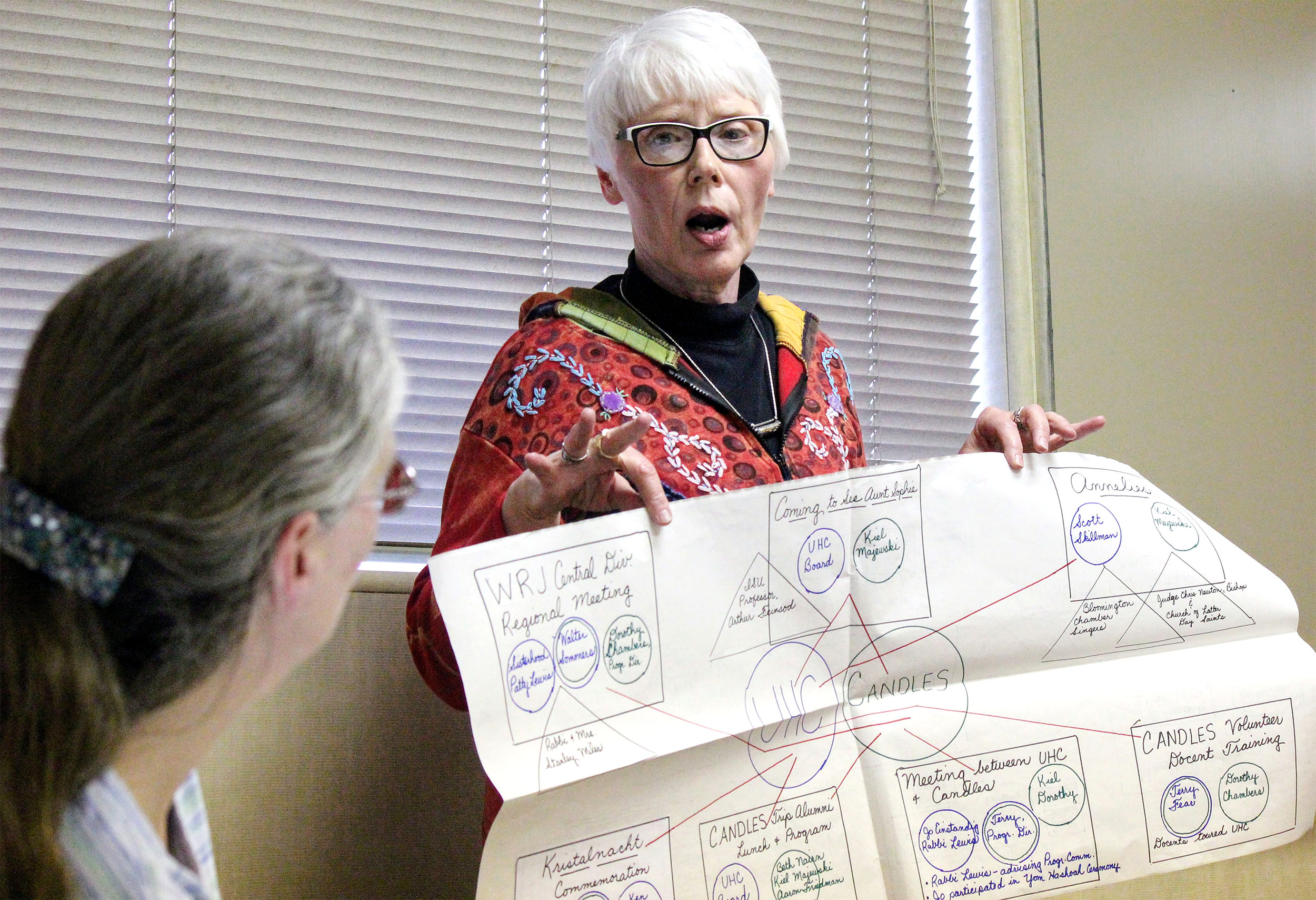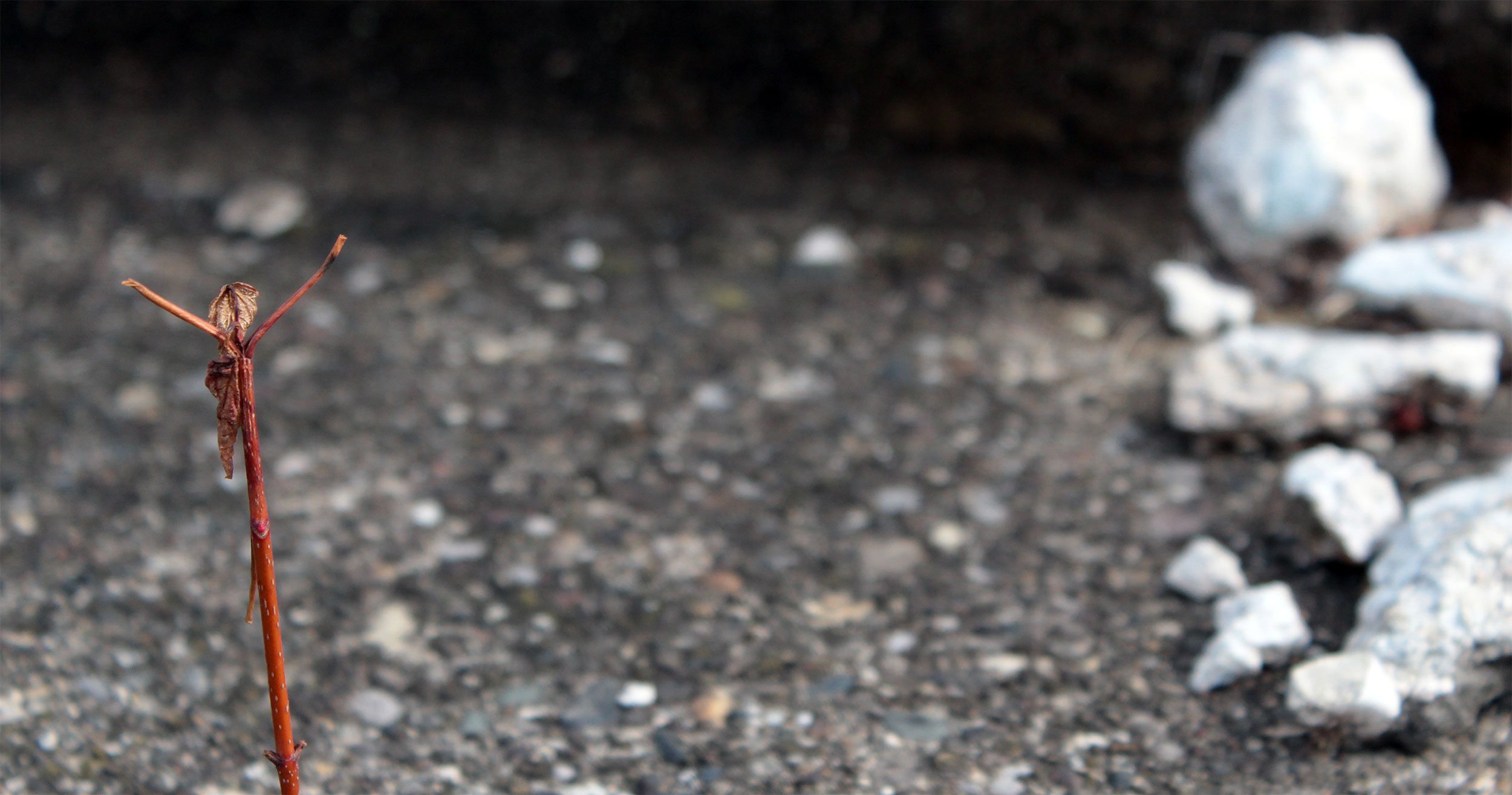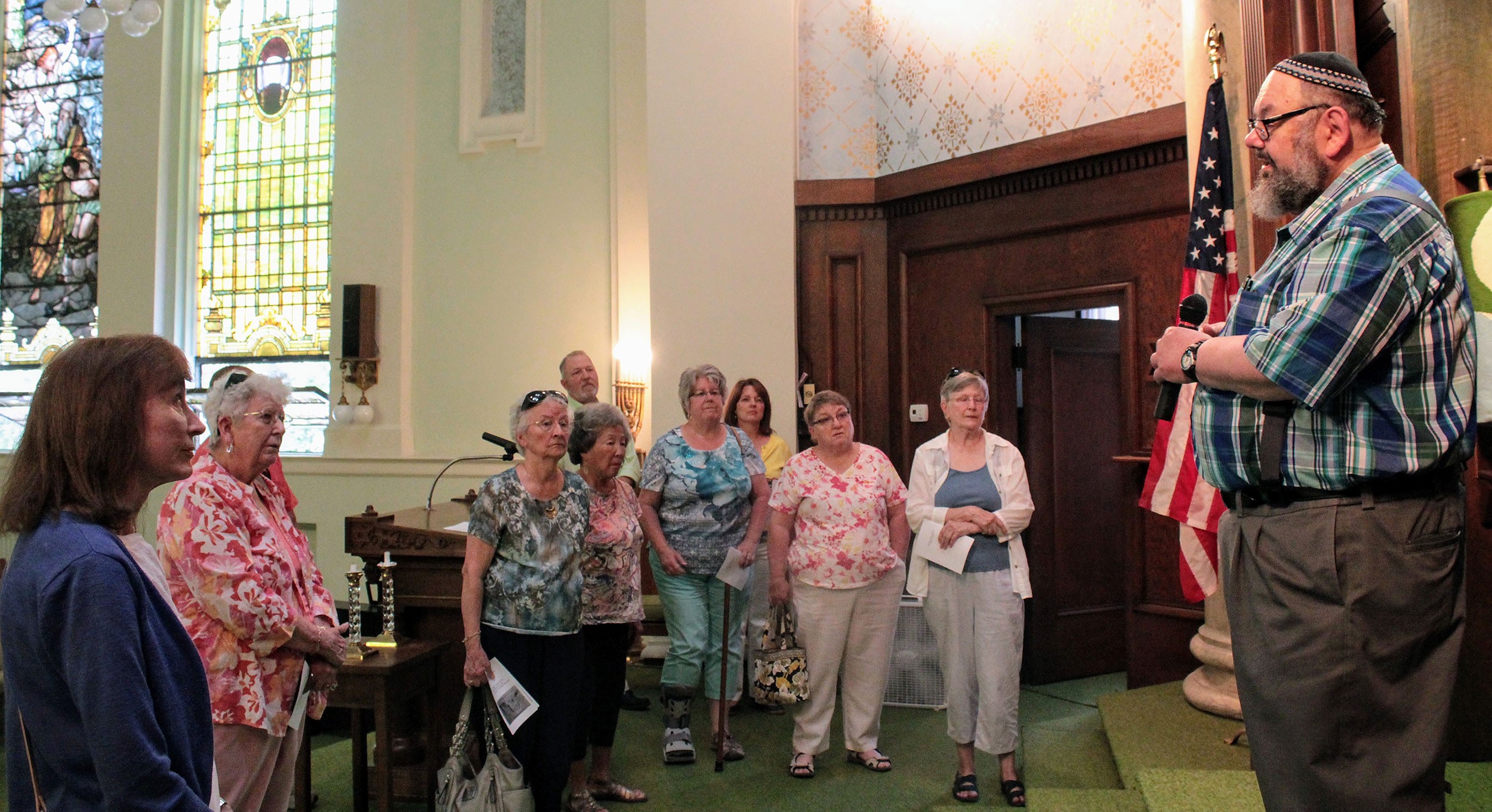Two years ago, Indiana Landmarks/Sacred Places Indiana invited United Hebrew Congregation Terre Haute to apply for a planning grant, earned due to the congregation’s small size and the daunting challenge it faced in maintaining a large, historic house of worship.
“I’ve heard people ask, ‘is the synagogue still even open?’” says Vice President/Secretary Terry Fear. “From the street, our building looks dark all the time. Even on Friday nights, our lights are shuttered.”
That challenge also created opportunity, however, as the congregation won a $5,000 grant — and a succeeding $25,000 capital grant — through the work of a team dedicated to revitalizing Temple Israel, a neoclassical structure built in 1911.
Lifeline for small congregations

Sacred Places Indiana director David Frederick and Bob Jaeger, president of Philadelphia-based Partners for Sacred Places, visited UHC in summer 2015 to discuss a $1.2 million, three-year Lilly Endowment pilot program to train shrinking congregations how to engage the community and raise restoration funds for their landmark buildings.
UHC — with a six-member team including Terry, Herschel Chait, Jo Einstandig, Betsy Frank, Laney Meis and Scott Skillman — became one of 10 congregations to participate in training that helped each produce a case statement, community asset map, capital campaign plan and funding strategies.
UHC was the first to qualify for the $5,000 planning grant, in October 2016, and won the capital grant in September 2017.
That initiative paid off. UHC was the first to qualify for the $5,000 planning grant, in October 2016, and won the capital grant in September 2017.
“I will tell you, United Hebrew Congregation were first in and got the first (planning) check,” Frederick says. You’ve really got good point people on that kind of thing.”
Terry adds, “but it’s just the beginning. We haven’t done the hard part yet.”
Temple Israel Feasibility Study identifies priorities

Only a sustained effort will raise the funds UHC needs to renovate Temple Israel and preserve the building as a vital community asset.
The Temple board authorized $2,000 on top of the initial grant to hire Indianapolis-based architects Browning Day Mullins Dierdorf to create a Temple Israel Feasibility Study prioritizing repair and renovation costs that could total $1.5 million.
The $25,000 capital grant arrives on a two-for-one basis, meaning UHC must contribute another $12,500. But those funds can be packaged to pursue larger matching grants.
Frederick says, “taking care of these kinds of historic buildings (requires) you to prioritize and use phased (projects determined by) your architectural or engineering study. Then you have an idea of all the stuff that you need in a big-picture way.”
BDMD architect Jonathan Young segmented the feasibility study cost projections into six categories, following a ‘top-down, outside-in’ historic preservation philosophy.
BDMD architect Jonathan Young segmented the feasibility study cost projections into six categories, generally following Frederick’s “top-down, outside-in” historic preservation philosophy.
“I think generally speaking, the exterior’s in pretty good condition,” says Young, who previously worked on a feasibility study for historic Beth-El Temple in Indianapolis. “There are a few masonry issues, which is common. A little bit of mortar deterioration. You always see that on historic buildings. (But) I don’t see any major structural issues here.”
Young’s report noted critical projects including roof and skylight repairs, brick and Indiana limestone masonry restoration and restoration of the six large stained glass sanctuary windows, half-dome glass and wooden front doors.
Interestingly, the top tier of steps at the front entrance are limestone, and holding up relatively well. The two lower concrete tiers will require replacement.
Other, lower-priority projects would add an elevator and new bathrooms to help Temple Israel meet Americans with Disabilities Act of 1990 standards.
UHC prepares to engage the community

While restoration typically progresses from outside-in, Terry and SPI’s Frederick agree that Temple Israel’s future depends on the converse — an “inside-out” approach where UHC engages the community.
UHC has participated in successful community events during the past year, including the Veterans Day Shabbat and Torah study sessions at Westminster Village, Stained Glass Sunday and a Holocaust Remembrance Day program at Temple Israel.
While restoration typically progresses from outside-in, Temple Israel’s future depends on an ‘inside-out’ approach where UHC engages the community.
“We’ve gotta find out who we are,” Terry said after a recent student-rabbi-led Torah study session at Westminster Village. “Do we need something like this to get people interested? That’s why I’ve said, if anybody wants to come see the Temple, just ask, and I’ll give you a tour.
“Once we are established in terms of who we are in the community, then we’ve got to do some fundraising. That, I don’t know anything about. I’m out of my element.
“I can organize little things all day long. But raising a million dollars? We all have to start looking through our heritage to see if we have any rich uncles out there.”
Frederick says, “One of the things we really stress and encourage in the training is connection with the community. You’re going to be reaching out to the community in terms of fundraising to help you maintain your building. If you could do it internally, you’d already be doing it.”
Terry Fear: ‘I can organize little things all day long. But raising a million dollars? We all have to start looking through our heritage to see if we have any rich uncles out there.’
The congregation should “externalize your connections” and seek “good partners for programming” at Temple Israel and throughout Terre Haute. “Clearly, your connection with CANDLES can be pretty important for community awareness and awareness within the broader Jewish community.
“Again, a big part of my job in establishing Sacred Places Indiana is to build relationships with congregations and parishes throughout the state of Indiana,” Frederick says.
“One of the things we believe Landmarks can add to the picture with these faith communities is (to offer) a continuing relationship and advice, encouragement and support.
“Just because you finished the training doesn’t mean I’m going to stop trying to be involved and (advise) in ways that are appropriate. We tend to be involved long-term on solutions.”
